The salty photos below are just a taste of Issue 25, which features “Sea Change,” an article on sea cliff climbing by David Pickford. You might recognize him as the editor of planetfear.com and as Alpinist’s July 2008 Photographer of the Month (download his awesome work in high-res at Alpinist Wallpaper).
Issue 25 goes on sale September 1 (or subscribe now and get 33 percent off, for a limited time).
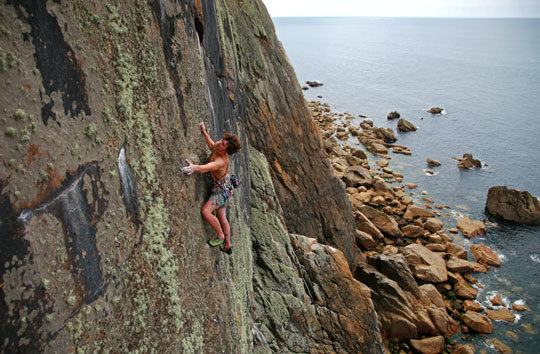
Neil Dickson making the second ascent, and the only onsight, of the serious Mayan Skies (E7 6b [5.12a X]) at Black Crag on the west coast of Lundy Island, England. Gary Gibson first climbed the route in 1986 with four bolts and a two-bolt belay. He returned in 1989 to remove the bolts and lead the route without them, after local climbers had reached a consensus that Lundy, like all nonquarried southwest sea cliffs, should remain bolt-free. Now the only protection on the crux ninety feet up is a skyhook and a cluster of RPs. This same ultra-bold style of British trad climbing appears throughout North Wales and on Peak District gritstone. [Photo] David Pickford
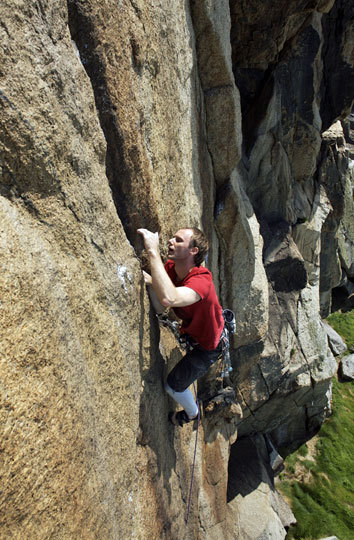
Will Boxen throws in a jam on the sustained crack line, Kafoozalem (E4 6a [5.11b]), at Bosigran. This route typifies the exceptional climbing in West Cornwall, which has more in common with North American granite than most other British outcrop crags have. [Photo] David Pickford
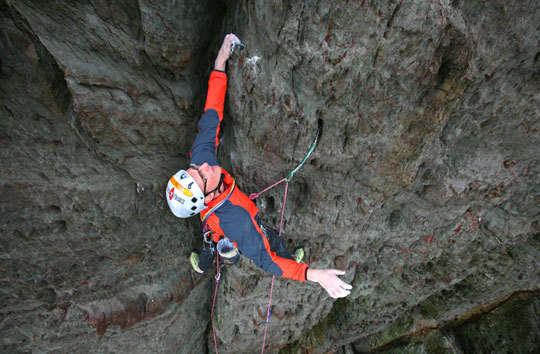
Ian Parnell on his route Dark Angel (E5 6a [5.12b]) on the Cheesegrater Cliff, Baggy Point, North Devon, England. Parnell first climbed this striking, 50-meter crack line during his prolific new-routing phase in the early 1990s, using a piece of hammered-in wood to protect the initial off-width. Due to the committing and unusual nature of the rock (the crag is composed of a stratified, metamorphic shale) the route has seen only two repeats in the last fifteen years. Dark Angel is typical of the esoteric sea-cliff climbing that abounds in southwest England. [Photo] David Pickford
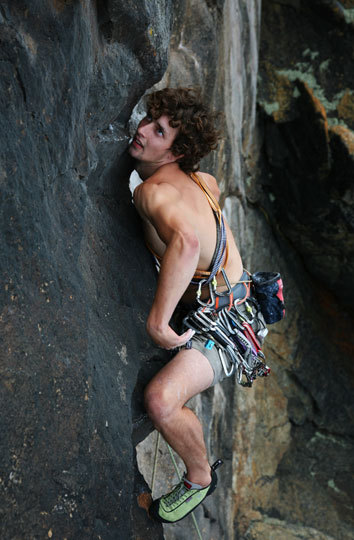
Neil Dickson keeps his cool high above RPs on his onsight second ascent of Mayan Skies (E7 6b [5.12a X]), Black Crag, Lundy Island. [Photo] David Pickford
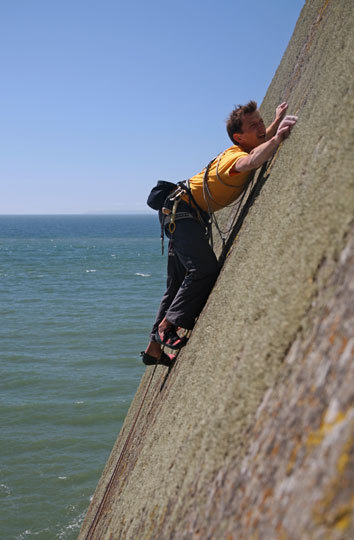
Nic Sellers looks for a way through sea grass on the ultra-thin crux of Inferno (E5 6b [5.12b]), Long Rock Slab, Baggy Point, North Devon. Chris Nicholson first climbed the route entirely free in 1986. Lundy Island, containing the sea cliffs that played an important role in Pickford’s early climbing, is just visible on the horizon beyond. [Photo] David Pickford
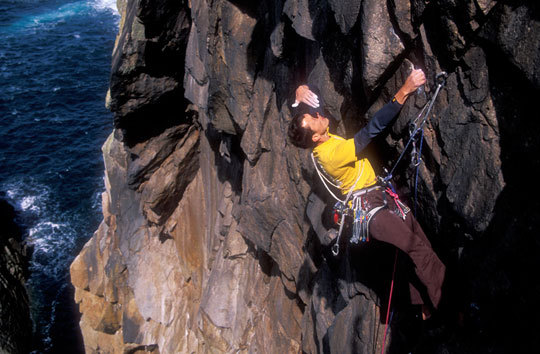
Nic Sellers climbing into the sun on the classic line of Cithaeron (E4 6a [5.11d]) at The Parthenos on Lundy Island’s west coast. First climbed by Gary Gibson and Matt Ward in 1984, the route is now established as one of Lundy’s best 5.11s. [Photo] David Pickford
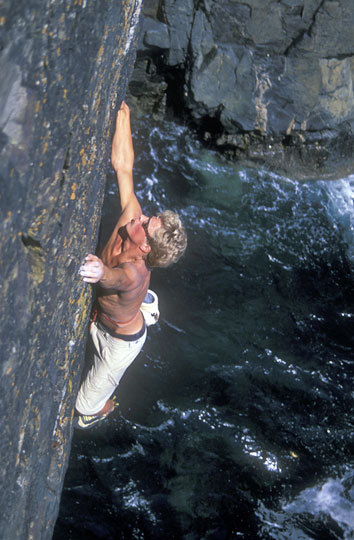
Pickford on the first solo ascent of Silence of a Lamb (E6 6b [5.12b X]) at Gurnard’s Head, a 250-foot sea-cliff crag in West Cornwall, England, on a high spring tide in August 2005. The route, according to Pickford, is less serious as a deep water solo at high tide than as a lead at low tide. [Photo] David Pickford
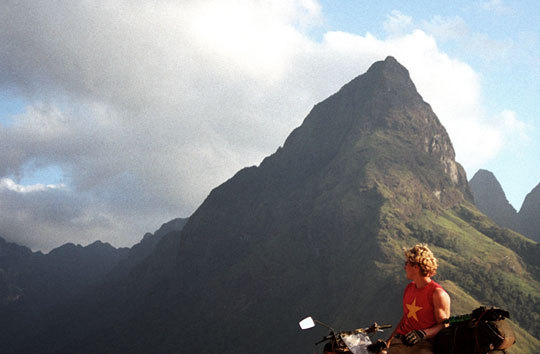
Pickford with his Minsk motorcycle in northern Vietnam, in front of Fansipan (3143m), the country’s highest mountain. In 2003 Pickford rode this “dilapidated” two-stroke vehicle 20,000 kilometers from Vietnam across southern China, then farther south through Thailand, Cambodia, Malaysia and into Indonesia. By the end of the expedition in Singapore, the bike’s frame had been welded in twenty-five separate places. During this trip, Pickford’s interest in photography and writing developed into a career. [Photo] David Pickford